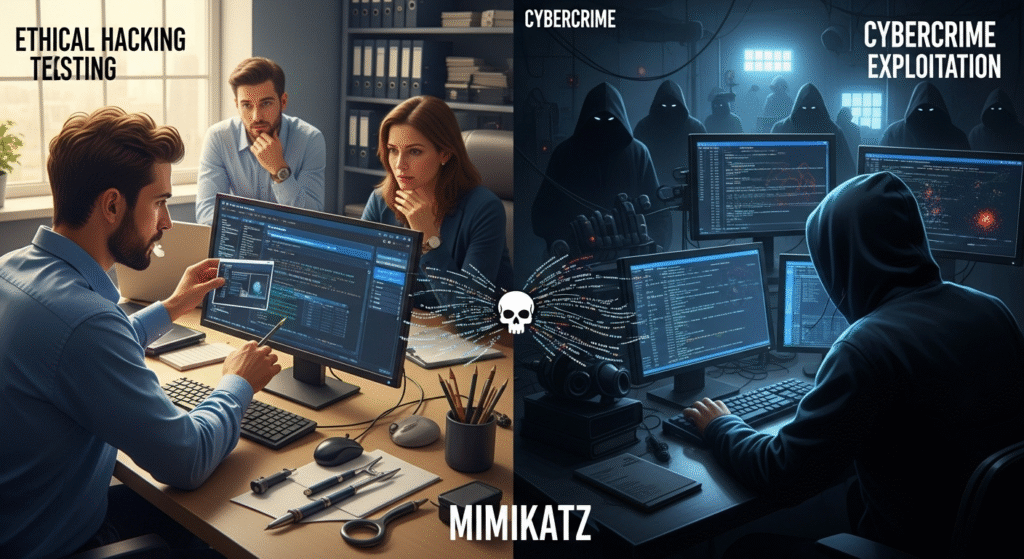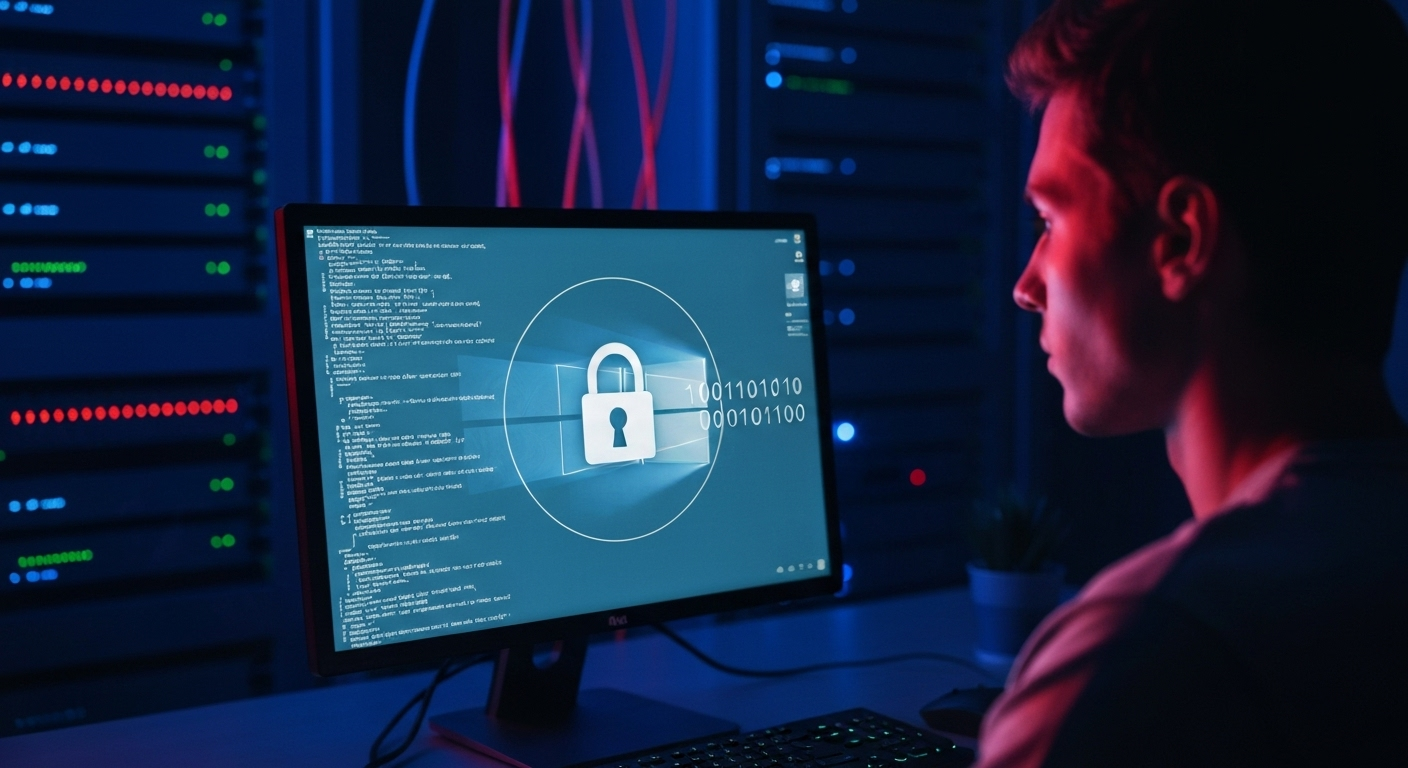In the ever-evolving world of cybersecurity, few tools have left as profound an impact as Mimikatz. This Mimikatz-centric timeline snippet explores the origins, key milestones, and enduring legacy of this powerful credential-dumping tool. From its humble beginnings as a research project to its role in major cyberattacks, Mimikatz has shaped both offensive and defensive strategies. Whether you’re a red teamer, blue team defender, or cybersecurity enthusiast, understanding Mimikatz is essential for navigating modern threats.
Table of Contents
The Birth of Mimikatz: A Researcher’s Revelation
Mimikatz was born in 2011, created by French security researcher Benjamin Delpy, better known online as “gentilkiwi.” Delpy’s curiosity centered on how Windows managed user credentials in memory, particularly within the LSASS (Local Security Authority Subsystem Service) process. His findings exposed critical vulnerabilities in password storage and authentication mechanisms.
Rather than keeping his discovery private, Delpy released Mimikatz publicly on GitHub. His intent was educational: to pressure vendors like Microsoft into enhancing security practices. By making the tool accessible, he aimed to highlight risks and encourage organizations to fortify their systems. However, this openness also made it readily available to malicious actors, turning a research aid into a potential weapon.
From Research Tool to Hacker’s Go-To: Early Adoption and Spread
Upon its release, Mimikatz quickly gained traction among ethical hackers and penetration testers. They valued it for demonstrating real-world vulnerabilities to clients during assessments. But its appeal soon extended to cybercriminals, ransomware groups, and state-sponsored hackers, who saw it as a pre-built arsenal for exploitation.


What made Mimikatz a favorite? Its versatility in extracting credentials, exploiting authentication protocols, and enabling attacks like Pass-the-Hash (PtH), Pass-the-Ticket, and Kerberos Golden Ticket creation. Attackers could seize control of Windows networks without needing actual passwords—just access to a compromised machine. Demonstrations at security conferences and online forums fueled its growth, with users sharing scripts to extend its functionality.
Read: Intel i9 vs Intel i7: Do More Cores Always Mean Better Performance?
Recognition as a Major Security Threat: The 2014 Turning Point
By 2014, the Mimikatz-centric timeline snippet had crossed from theoretical tool to real-world menace. Reports from businesses, governments, and cybersecurity firms detailed attacks leveraging it for privilege escalation and lateral movement. Internal threats, such as rogue employees, used it to abuse authorized access, while external breaches involved stolen credentials for network traversal.
This surge prompted urgent responses: System admins implemented group policies to limit LSASS access, antivirus vendors added detection signatures, and researchers developed monitoring rules. Yet, Mimikatz-centric timeline snippet adaptability—through modifications and obfuscation—made it resilient against these measures.
Peak Exploitation: Mimikatz in High-Profile Attacks (2016-2017)
The mid-2010s marked the zenith of the Mimikatz-centric timeline snippet in cyber threats. During this period, global ransomware outbreaks like WannaCry and NotPetya exploited credential-dumping techniques popularized by Mimikatz, enabling rapid lateral movement across networks.
Advanced Persistent Threat (APT) groups integrated it into their toolkits, deploying it post-initial compromise to harvest domain admin credentials and persist undetected. In large enterprises with lax monitoring, these operations were swift and stealthy, turning Mimikatz into a standardized playbook for attackers.
Unpacking Mimikatz’s Technical Power: Why It’s So Effective
At its core, the Mimikatz-centric timeline snippet excels due to its comprehensive features for credential theft and manipulation:
- Dumping Plaintext Passwords: Extracts credentials directly from system memory.
- Stealing NTLM Hashes: Allows reuse for unauthorized authentication.
- Kerberos Ticket Extraction and Forging: Enables Golden and Silver Ticket attacks for persistent access.
- Pass-the-Hash and Pass-the-Ticket: Bypasses password requirements for lateral movement.
- Skeleton Key Installation: Implements universal passwords across domains.
Its simple command-line interface makes it accessible, yet powerful enough to serve as a one-stop solution for privilege escalation in Windows environments.
Real-World Incidents: Mimikatz-centric timeline snippet in Action
Mimikatz-centric timeline snippet has fingerprints on countless breaches. In the 2014 Sony Pictures hack, attackers reportedly used similar credential-dumping tactics to navigate the network. It’s been pivotal in ransomware deployments, banking Trojans, and nation-state espionage, often during reconnaissance or escalation phases.
From financial institutions to healthcare providers and governments, Mimikatz-enabled attacks have compromised hundreds of systems, eroding defenses before final payloads are delivered.
Read: The Dark Side of Omegle: Privacy Concerns and User Experiences
Defenders Strike Back: Evolving Countermeasures
In response, Microsoft introduced features like Credential Guard in Windows 10 Enterprise, virtualizing credential storage to block user-space access. Security teams adopted Event Monitoring, Endpoint Detection and Response (EDR) tools, and Sysmon for behavioral detection.
However, attackers countered with memory-only payloads, PowerShell scripts, and obfuscated variants. Effective defense now demands a layered strategy: least-privilege access, network segmentation, and proactive authentication monitoring.
The Red vs. Blue Team Dynamic: An Ongoing Arms Race
Mimikatz-centric timeline snippet remains a red team staple for simulating real attacks in exercises and testing network resilience against credential theft. Blue teams, in turn, hone detection skills to respond swiftly. This cat-and-mouse game drives innovation—new evasion techniques spur advanced defenses, strengthening the cybersecurity community overall.
Ethical Dilemmas: The Double-Edged Sword of Open-Source Tools
Mimikatz sparks ongoing debates: Should such potent tools be public? Delpy defends its openness, arguing it educates defenders and forces better security. Critics highlight misuse by script kiddies and pros alike, where educational benefits clash with real harm.
Mimikatz’s Enduring Legacy: Lessons in Cyber Trust
Over a decade later, Mimikatz has reshaped cybersecurity. It compelled vendors to rethink credential handling, educated thousands of professionals, and exposed authentication flaws. On the flip side, it facilitated massive data thefts. Ultimately, it redefined trust in networks, emphasizing the dangers of weak memory protection.
Successor Tools and Spin-Offs: Building on Mimikatz’s Foundation
Mimikatz inspired a wave of specialized tools:
- Rubeus: Focuses on Kerberos abuse for ticket manipulation.
- Kekeo: Specializes in ticket forging and analysis.
- LaZagne: Retrieves credentials from browsers and applications.
These extend Mimikatz’s principles, offering modular options for attackers while challenging defenders to adapt.
Is Mimikatz-centric timeline snippet Still a Threat in 2025?
Absolutely. As of 2025, Mimikatz-centric timeline snippet and its derivatives remain prevalent in both ethical and malicious contexts. Improved defenses haven’t eradicated it; instead, attackers use clones or technique variations for the same ends: credential compromise and network breaches. Ignoring it is a risk no defender can afford.
The Future of Credential Attacks: Beyond Mimikatz
Emerging trends like passwordless authentication, biometrics, and multi-factor authentication aim to neutralize tools like Mimikatz-centric timeline snippet. Yet, until legacy passwords fade, credential theft will persist. Mimikatz paved the way for future innovations in access exploitation, ensuring its influence endures.
Conclusion: A Cybersecurity Milestone
This Mimikatz-centric timeline snippet illustrates a story of innovation, exploitation, and adaptation. From a simple research tool to a cornerstone of cyber operations, Mimikatz has transformed how we view digital security. For testers and defenders alike, mastering its mechanics—and countermeasures—is key to staying ahead in the cyber battlefield.
FAQs About Mimikatz
What is the main purpose of Mimikatz?
Mimikatz extracts credentials and security tokens from Windows memory, aiding privilege escalation and lateral movement.
Can Mimikatz be used legally?
Yes, in authorized settings like penetration testing or training labs with explicit permission.
How does Mimikatz extract credentials?
It targets the LSASS process to retrieve passwords, hashes, or Kerberos tickets stored in memory.
What makes Mimikatz so dangerous?
Its ability to provide domain-wide access via stolen credentials, enabling attackers to bypass traditional defenses.
Is Mimikatz still used in 2025?
Yes, Mimikatz and similar techniques continue to pose threats, used by ethical hackers and adversaries alike.



